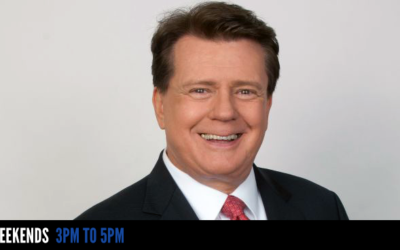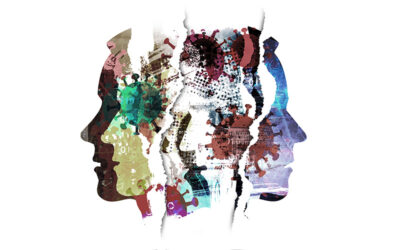I have been in chiropractic practice for almost twenty five years. From the beginning, I have taken an integrative approach, working with a team of complementary practitioners—medical doctors, acupuncturists, physical, movement, and massage therapists, nurses, and osteopaths—all under one roof in my clinic, Chiromedica. There were not many practices like this back in the 1980’s. But in recent years there has been a proliferation of integrative health centers, many of them run by medical doctors. Major medical centers like California Pacific, UCSF, and Kaiser Permanente have set up “complementary and alternative medicine” clinics, yet chiropractic care is excluded in house, relegated (at best) to off site referral. Given chiropractic’s central role in the history and development of alternative and integrative healing, it is worth exploring why this might be the case.
Understanding the current state of American medicine requires a brief review of its history. In the mid to late nineteenth century, there was no professional monopoly on the delivery of health care. Allopathic (regular) doctors competed with homeopaths, eclectics (naturopaths), chiropractors, and osteopaths. Each discipline had something of value to offer, but none were sufficiently effective on their own to claim the cultural authority necessary to take control of the health care marketplace. By the early 20th century, however, regular medicine had gained this authority. In the throes of industrialization, America was enamored with all things scientific, and regular medicine was able to assert itself as the only healing discipline rooted in modern science. Armed with a foundational (germ) theory, a handful of effective drugs and surgical procedures, and political power consolidated through the formation of professional bodies like the American Medical Association and its Council on Medical Education, allopathic medicine finally cleared the field of competition.
Yet distant from the power centers of the new medical empire–New York, Boston, Baltimore, Chicago—which were anchored by university medical schools and their research hospitals, alternative practitioners continued to ply their trades. In poor rural areas there was no access to this “scientific” medicine and no money to seed its growth. It was the local chiropractors, osteopaths, and herbalists who remained. These practitioners were affordable, rooted in their local communities, and effectively treated a host of conditions that this new medicine could not.
Throughout the 20th century, changes took place rapidly. Allopathic medicine developed increasingly sophisticated methods of diagnosis and treatment. Osteopathy was folded into medicine in a deal struck with the AMA whereby parity was given in exchange for the abandonment of osteopathy’s primary focus on esoteric theories of illness and its practices of body manipulation. And many of the practices of the eclectics (naturopaths) were adopted (or co-opted) by regular medicine, leading to a withering of the schools of natural medicine. Chiropractic stood alone in its resistance to the new medical power, and suffered the consequences of its disobedience–outlawing of the profession, jailing of its practitioners, conspiracies to destroy it from within. But still the patients came. And as the science grew to support the ancient manipulative art, (see “Chiropractic and the East/West Dilemma). Chiropractic came to become a significant player at the table of American health care.
Traditional Chinese Medicine (TCM), which includes acupuncture and has a two thousand year old history, has arrived only recently in the United States. Although practiced throughout the historical period described above, it was found mainly within scattered Chinatown’s, invisible to most of the country. Sensationalized with Nixon’s opening to China when one member of the American entourage had an attack of appendicitis and was anesthetized using only acupuncture needles, this system came to the awareness of the American public. Thawed relations with China allowed increased flow of this knowledge and the beginning of TCM’s utilization on a popular scale. At first the MD’s tried to prevent the use of this therapy, labeling it oriental mysticism, a primitive relic, without scientific basis. But patients discovered that this “new” practice could treat a host of conditions that stumped their regular MD’s. The next response by the MD’s was control, asserting that only MD’s could practice this new healing art. It was a public safety issue, they claimed. Patients needed to be protected from unqualified practitioners—charlatans who might take advantage of the innocent public. So an MD who took a 300 hour course in acupuncture in a conference room at a Marriot Hilton could practice, but someone who studied the ancient science for 4 years or longer in China was prohibited. After this failed to have an effect on public utilization, TCM gained a foothold in the health care market. Colleges of Traditional Chinese Medicine were established, licensing was instituted, and today, Licensed Acupuncturists (L.Ac.) and Oriental Medical Doctors (OMD) are recognized as primary providers, covered by many of today’s health insurance plans.
Now acupuncturists share space with M.D.’s. They are vital players on the integrative medical team. And while TCM is clearly a very powerful healing modality which stands up to scientific scrutiny when examined as an internally coherent system, the medical establishment seems to have shed many of the classical western scientific standards that it has applied so rigorously to other disciplines. It appears to accept that the body has an energetic system yet to be understood. That there are channels through which this energy flows that cannot be dissected out in the anatomy lab. That one can have a diagnosis of “windy liver” and proceed to treat this condition by putting needles into invisible points and prescribing teas and medicines made of (laboratory untested) herbs. Yet chiropractic, which is firmly rooted in western knowledge of anatomy, physiology, and neurology, is refused inclusion, despite the mounting evidence to support it’s therapeutic efficacy, particularly in the realm of musculoskeletal dysfunction.
The conflict between chiropractic and regular medicine has always been, at its core, a battle over market share. Regular medicine has spent vast sums of time and money on the slandering and libel of chiropractic. This negative message has sunk deep into the American consciousness and it plays not only in the minds of patients, but also in those of their doctors. chiropractic has become the “anti-medicine”. Medicines shadow. Non-scientific. A relic of our quaint medical past. A villain in the glorious story of the rise of modern medicine. To accept chiropractic after this telling undermines the foundation myth of modern medicine. To challenge the “truth” of this story ultimately threatens medical power, and the money that flows through the channels carved by that power.
So why has TCM been brought into the medical fold? First, there has not been a protracted historical struggle between regular medicine and TCM. While the battles might have been intense, they were brief. There was not enough time to establish deep toxic memories. On the contrary, TCM was something that rode to America on the countercultural wave of the 1960’s and 70’s. Coming at a time when the American mind was wide open to the great traditions of the east—Hinduism, Buddhism, Taoism–it was embraced as an extension of these ancient wisdoms. And it did not challenge the new scientific medical paradigm since it existed in an alternate universe, internally consistent, yet impossible to validate using standard scientific protocols. Challenging the TCM paradigm did nothing to undermine the logic of allopathic medicine. The medical acceptance of TCM is the warm and fuzzy romantic embrace of an exotic new friend. In the classic Orientalist tradition, eastern medicine has satisfied the western desire for mystery. And as long as the “orientals” know their place as valued, but less than equal partners of allopathic medicine, the two professions could happily work together to develop the “new” integrative model.
Allopathic medicine has successfully asserted its power and claimed the mantle of cultural authority. It has become fully internalized in the American psyche. Throughout its history, this medicine has absorbed the techniques and practices of other healing systems, both to strengthen its own practice and to undermine its competition. In adopting TCM in toto, as part of the integrative medical model, allopathic medicine expands its reach through accommodation of the cultural demands for TCM and other complementary therapies. At the same time, it maintains control of the new system, expanding on its historic strategy to dominate the health care marketplace. And make no mistake. The MD’s are firmly in charge. Ask any Acupuncturist working in this setting and they will tell you. That is, unless the acupuncturist happens to be an MD as well!
Integrative healing has been at the core of chiropractic practice for decades, yet chiropractors remain shut out of the corridors of integrative medical power. However, paradigms are always in flux, pushed to change from the periphery, and we chiropractors, the perpetual outsiders, are still well positioned to broaden the scope and deepen the practice of integrative medicine. A true integrative model would be one that fully embraces the healing arts and sciences of allopathic, TCM, and chiropractic, with each profession contributing its valuable piece, equally, for the benefit of patients everywhere.
[email protected] www.rickyfishman.com












Hi Ricky:
I like the article and what you had to say. I am very happy that the culture has started to see the light. I think I told you that the doctor’s and physical therapist’s have given personal trainer’s a hand up in being more confident in handing over there patient’s care to us.
Keep it up,
E.J.
What Ricky says here is fascinating for its historical perspective… but also strangely obvious from a human perspective.
In other words, What is all this business about integrative care?
The fact is that me (and everyone I know, including “regular doctors”) engage in integrative healing. We take our meds and we do yoga. We get x-rays and we get massage. We follow the drama of life-extending therapies come out of the laboratory even as we meditate or pray to find acceptance of our own mortality.
The problem, as Ricky points out, is that there’s very little institutional acknowledgment of this basic fact of life… and therefore people have to negotiate tremendous barriers simply to get the care they need and deserve.
We humans vote with our feet, in the end. Blue Cross may be slap-happy about paying for laser surgery for my spinal problems and Scrooge-y when it comes to paying my Chiro bill. But that doesn’t mean I’m going to go get surgery. (That said, I might sneak a couple of Ibuprofen pills every now and then.)
Thanks for the comment David. I think the fact that some professionals can practice integrative care for themselves, yet deny a very obvious part of the approach, is very interesting. Again, refer to my last piece “Chiropractic and the East/West Dilemma” for some historical perspective on the the art of spinal manipulation. The ignoring of this information is just a testament to the power of deeply internalized prejudice. Part of the challenge for MD’s is that they are generally a very intelligent bunch and have achieved highly in our society. And because of this achievement, many often feel like their way is the only way and resist the idea that there might be another group of healing professionals who might do something of value that they are unable to do. But this is just one more problematic function of ego. Yes, that old ego problem!
Nice summary Ricky– Having started the UCSF Osher Center for Integrative Medicine clinic, I can tell you first hand that the UCSF ‘medical establishment’ was willing to tolerate the concept of a UCSF Center conducting research and education (but must be ‘science-based) which was intentionally Phase I of operations upon the birth of the Center. We intentionally delayed the opening of the clinic to Phase II because we knew resistance was great.
Prior to opening the clinical practice, I presented our ‘plans’ to the Exec Committee of the hospital for their ‘approval’. We thankfully had a German trained physician who specialized in manipulation and spine and as such was able to offer the ‘healing art’ without the explicit veto of the committee who had expressed intolerance of giving chiropractors privileges at the University. Though it took 2 years and literally hundreds of hours of meetings and negotiations, we successfully sought privileges for acupuncturists (tho they were forbidden from dispensing herbs!), yoga therapists, and massage therapists…. prior to this action, these healers were not recognized as health professionals at UCSF.
So why so much resistance and by some, disdain, of the chiropractic profession from the medical establishment? I see a few reasons:
From Medical establishment:
1. $$$ and Power – a battle between the AMA and ACA/ICA etc. on who will be the ‘dominant’ player with regard to musculo-skeletal conditions?
2. Ego – particularly from the orthopedic surgeons.
From chiropractic profession:
1. Chiropractor profession claim to have a terminal degree– i.e. doctorate degrees.
To the beset of my knowledge, there is no other profession that claims to be ‘doctor’ or have a ‘doctorate’ without requiring all persons to have first completed a bachelor’s of science/arts degree followed by a graduate degree – i.e. PhD.
The chiropractic profession admits students to their colleges with only 90 semester hours of college education: http://www.palmer.edu/Palmer/Pages/Page.aspx?id=596
Perhaps it’s EGO, but I find it unjust for a chiropractor to call themselves “Doctor” when these requirements are implemented.
2. Many chiropractors are great businesspeople at the expense of their own integrity.
I have met only a handful of chiropractors (you included) who retain integrity of their discipline in focusing on structure and musculo-skeletal issues.
Too many make claims of treating asthma, diabetes, etc. Too many over-recommend supplements, specific expensive mail-out lab testing etc., and too many feel they are appropriatlely trained to be a primary care physician and therefore take on complicated medical problems clearly outside their training.
Admittedly, this is an issue with many disciplines who claim they are ‘integrative medicine’ or ‘holistic’ practitioners. Specifically, MDs, PAs, TCM practitioners (less so) also engage in such less than authentic practices that deplete their patients of their hard earned money under the guise of ‘providing a cure’– an absolute abuse of power in my view.
The bottom line is that there is prejudice on both sides with the medical establishment being the dominant cultural entity and therefore in my mind more to blame. Like any prejudice, ignorance and the passing on of ‘myth’ is the root… the answer is education, exposure, and better communication between leaders in each discipline who have retained the integity and spirit of the healing art.
Hi Brad,
Thanks so much for your thoughtful comments. I do have to correct one point however which is the assertion that Chiropractors are the only profession whose graduates call themselves Doctors and do not require a BA. Neither Dentists nor Podiatrists require the undergraduate degree although the vast majority have the four year undergraduate degree. It is the same with Chiropractic. I do not know a single Chiropractor who does not have the BA or BS although I am sure there are some. I even have a friend who passed the bar and is now a practicing lawyer here in SF who did not go to law school but had a great deal of paralegal experience and was able to sit for it under a special California waiver.
I do, however, agree with your critique of Chiropractors who exceed what I perceive as their scope of practice even though they may not be stepping outside legal bounds. I have always felt uncomfortable with Chiropractic claims to cure organic problems. Given the complexity of the human body, especially the complexity of our neural wiring, it is not surprising that manipulation of the somatic structures can cause reflexive changes in other systems, but to say that with spinal manipulation, one can “cure” certain conditions like asthma in a targeted manner, is highly problematic ethically. I have always felt comfortable dealing in the structural realm and if you read my piece “Chiropractic and the East/West Dilemma” you will see my argument about the historical presence of Chiropractic (under many other names I am sure). What we do has been done forever (or at least for a very long time) Chiropractors in a sense are victims of their own creation myth, that DD Palmer cured his maintenance man of deafness with a single cervical manipulation. For some reason, many Chiropractors have hung onto this as many Christians have hung onto the literal telling of Genesis.
There is indeed a great deal of prejudice going both ways, but as you say, it is the Medical Profession that is dominant in our contemporary culture and so they hold the keys to the gate and control who comes in and who doesn’t. The history of Western Medicine is full of stories about techniques that were used and then discarded as failures, and the motivation for the implementation of these therapies has often been monetary, both surgical procedures as well as pharmaceutical modalities so I think professional greed and lack of integrity spreads across the professional spectrum. This is probably more a human problem than one particular to a particular profession.
I think the most powerful thing we can do is have open and honest dialogue which includes each professions willingness to self critique. When I was an associate of an unnamed Chiropractor when I got to California (for 9 months) I attended a business management seminar with him and was horrified by the things that were being taught. I ran from those management people and from that Doctor and set up on my own. Perhaps I would be a rich man today if I followed the principles being taught, but at least I can sleep soundly knowing that I provide a valuable, helping service to my patients.
I really enjoy this kind of dialogue and would love to have more of it with you and others in allied professions who really want to develop a “true” Integrative Medicine.